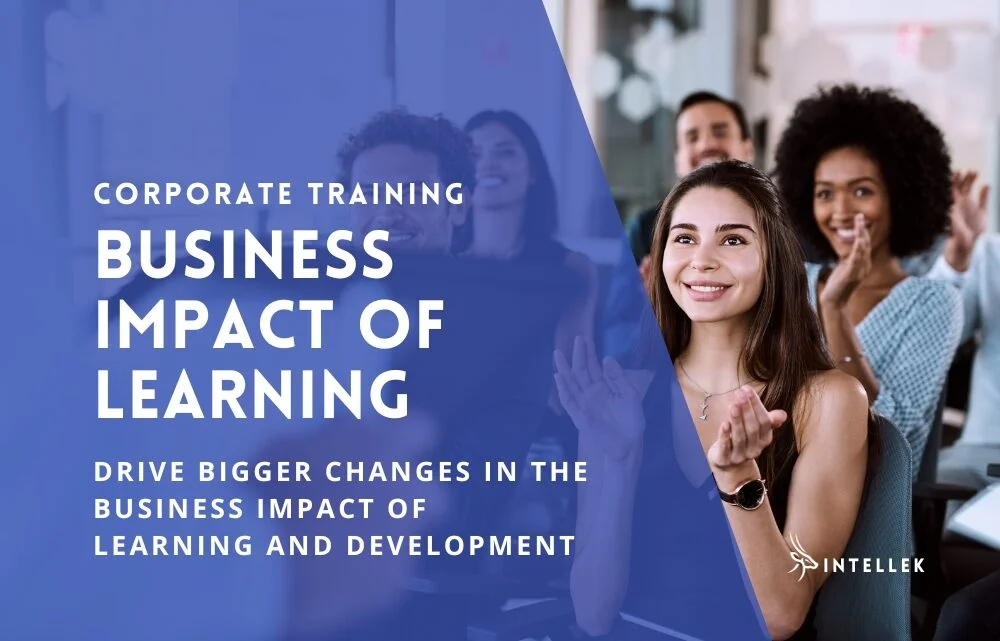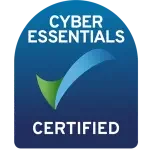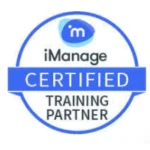
Companies need to keep improving the skills of their employees. Setting clear learning objectives can help ensure that training aligns with the skills and knowledge that learners need to acquire. Without ongoing training and learning, workers fall behind which hurts the company over time. However many workplace training programs seem to have limited impact back on the job. Employees take some courses but are not using new knowledge and skills at work.
This article provides simple, practical tips to help workplace training drive bigger changes in the business impact of learning and development. These tips center around aligning training to key business objectives, making the learning relevant to real work tasks, increasing access to more employees faster through technology, and measuring the impact on metrics the business cares about.
The aim here is to improve the business impact of workplace training in clear, actionable, and measurable ways. The focus stays on simple principles applied effectively rather than large theoretical concepts or overhauls. Putting a few improvement steps – of better alignment, application, accessibility, and impact measurement – into place can elevate learning programs from a “nice-to-have” to a “must-have” strategic business priority.
IN THIS ARTICLE...
The Importance of L&D Programs
In today’s fast-paced business environment, learning and development programs are not just beneficial—they are essential. These programs help organizations stay competitive by attracting and retaining top talent, aligning learning with business goals, increasing accessibility and engagement, and demonstrating a clear return on investment. By investing in learning and development, companies can ensure their workforce is equipped with the skills and knowledge needed to drive business success.
Attracting and Retaining Talent
Attracting and retaining top talent is a cornerstone of any successful organization. L&D programs play a pivotal role in this process. By offering robust opportunities for professional development, companies can attract employees who are eager to learn and grow. In fact, a staggering 94% of employees say they would stay at a company longer if it invested in their professional development. Moreover, organizations that prioritize professional development see a 34% higher retention rate. This clearly shows that investing in training programs not only draws in top talent but also keeps them engaged and committed to the company.
Elevate the Business Impact of Learning & Development
This article covers effective learning strategies for workplace learning and development (L&D) programs to drive business impact. Effective strategies can help L&D professionals measure the impact of their training programs and secure management support. Companies that focus their training and upskilling efforts on key business priorities and goals can gain significant competitive advantages.
The four main points covered are:
Focus Training on High Business Priorities: Tailor learning programs to directly address skills gaps related to company growth, efficiency, customer, or other strategic goals. This ensures maximum return on training investment.
Support Skills Application with Relevant Activities: Incorporate realistic on-the-job applications, scenarios, and activities into training to aid retention and workplace application.
Leverage Technology to Increase Accessibility: Implement digital tools like microlearning, online modules, and simulations to make learning accessible anytime, anywhere. This increases engagement and convenience.
Measure and Communicate Business Impact: Evaluate training outcomes based on tangible business metrics and KPIs instead of just participant enjoyment. Communicate outcomes to demonstrate L&D’s tangible impact and encourage further investment.
1. Focus Training on High Business Priorities
For companies to stay competitive, workplace training and development programs must connect tightly to business priorities. This starts with identifying critical skills gaps and setting clear learning objectives to develop targeted training programs that address these gaps. By focusing training time and investment on key areas, companies can achieve growth, efficiency, improved satisfaction, or other goals. For example: If sales staff needs an immediate boost in social media marketing capabilities for revenue targets, then programs should zero in on closing those priority skills gaps.
Imagine your training investment as a tailor-made suit. When you get the suit, you want it to fit perfectly, right? You wouldn’t want extra fabric where it’s not needed or a loose fit anywhere. You’d want it to complement you exactly where it matters.
So, when you align your training programs with your company’s key objectives, it’s like tailoring that suit to fit your needs precisely. If your company is aiming for revenue growth, it’s like ensuring the suit accentuates your best features. You’d focus on honing skills like sales strategies, client relationships, or product knowledge – making sure the suit (training) fits those areas flawlessly.
Likewise, if your goal is efficiency, you’d want the suit to be perfectly streamlined. So, the training investment would emphasize skills like time management, process optimization, or using specific tools effectively – making sure the suit fits your efficiency goals like a glove.
And just like tailoring a suit, where you spend more time and effort on areas that matter most to get that perfect fit, focusing your training investment on these high-priority areas ensures that you get the best results for your business.
Aligning Learning with Business Objectives
For training programs to be truly effective, they must be aligned with the organization’s objectives. This means identifying critical gaps in skills and developing targeted training to address these gaps. By doing so, employees can acquire the skills and knowledge necessary to meet business goals. For instance, if a company aims to enhance customer satisfaction, training programs should focus on improving customer service skills. Aligning learning with business objectives ensures that training efforts directly contribute to improved employee performance, increased productivity, and enhanced customer satisfaction.
2. Support Skills Application with Relevant Activities
The challenge often faced after learning new skills or knowledge is the difficulty in applying that learning back to the job. To combat this, a highly effective approach is to design training activities that closely resemble the actual tasks and scenarios encountered in the workplace. This strategy helps bridge the gap between learning and application.
By incorporating realistic applications, scenarios, and activities into training, learners get the chance to practically apply what they’ve learned in a context that mirrors their job responsibilities. These activities reflect the challenges, processes, and situations that employees typically encounter in their day-to-day work.
Simulate Real Work Situations & Address Skills Gaps
These activities directly address specific company objectives – improved customer service, increased efficiency, or enhanced leadership. They are designed to simulate real work situations, allowing employees to practice and apply skills that directly contribute to achieving these goals. As employees develop and master these skills through these realistic activities, they become better equipped to positively impact the company’s overarching objectives.
As a result, individuals can practice using newly acquired skills in scenarios that feel familiar and relevant, thereby solidifying their learning and understanding of how to apply these skills effectively on the job. This not only enhances knowledge retention but also demonstrates the direct relevance and impact of the learning material on their work performance.
Realistic Learning Activity Example
If a company aims to enhance its customer service standards, one realistic activity could involve simulated customer interactions where employees handle various scenarios, such as addressing complaints, providing product information, or handling inquiries. These scenarios would directly reflect the real interactions they encounter on the job. By practicing these interactions, employees not only improve their customer service skills but also understand how their actions impact customer satisfaction, aligning with the business goal of improving customer experience.
Practical Training Activity Example
For a goal centered around increasing efficiency, a practical activity might involve process optimization simulations. Employees could work through typical workflows, identifying bottlenecks or inefficiencies, and proposing improvements. This hands-on activity would mirror their day-to-day tasks, allowing them to apply problem-solving skills directly to their work processes. As a result, employees not only learn optimization techniques but also contribute to the company’s efficiency goals by implementing viable improvements.
Relevant Training Scenario Example
Another example could be training aimed at fostering leadership skills. Here, a relevant scenario might involve simulated leadership challenges, such as conflict resolution among team members or decision-making during a crisis. By engaging in these scenarios, aspiring leaders can practice critical skills like communication, decision-making, and team management in a context similar to their managerial roles, aligning with the business goal of developing capable leaders to drive team success.
Leverage Technology to Enhance Learning Strategies
Using technology to increase accessibility in training means implementing digital tools to make learning easier, faster, and available to more people. Think about it like having your learning materials on your phone or computer instead of just in a classroom. One big advantage is that it helps companies reach more employees without worrying about geographical limitations or spending loads on travel expenses.
By using digital tools, companies make learning engaging and easy to access, no matter the employee’s location or schedule. These methods cater to different learning styles and preferences, making the learning process more effective and enjoyable. These digital tools make learning engaging and accessible anytime, anywhere:
Microlearning: This is like having mini-lessons instead of one big class. It breaks down complex topics into small, easy-to-understand bits. For example, instead of a long session on software training, employees get short, focused lessons on specific features. These short bursts of learning fit into busy schedules and are easier to remember.
Online Modules: These are like digital classrooms accessible anytime, anywhere. Employees can log in and learn at their own pace. For instance, they might have modules covering topics like compliance, sales techniques, or safety procedures. The flexibility here allows individuals to learn when it’s most convenient.
Accessible Simulations: Think of this as a virtual practice ground. Employees can use simulations or interactive tools to practice skills in a safe, risk-free environment. For instance, in customer service training, they might practice handling different scenarios with virtual customers. It’s like a realistic video game that teaches skills relevant to their job.
But here’s the cool part… while technology plays a big role, blending it with some face-to-face interactions, like workshops or group discussions, adds a personal touch. This combination of digital learning with in-person elements creates a well-rounded learning experience. It’s like having the best of both worlds – flexibility and convenience through technology, coupled with the high-touch, personal aspects of traditional learning.
Increasing Accessibility and Engagement
To maximize the effectiveness of learning and development programs, it’s crucial to make training accessible and engaging for all employees. Utilizing learning management systems (LMS) can help achieve this by making training materials readily available. Additionally, incorporating various training methods—such as online modules, classroom sessions, and on-the-job training—caters to different learning styles and preferences. This approach not only increases accessibility but also boosts employee engagement and participation in learning programs. By making training more accessible and engaging, organizations can ensure higher retention and application of new skills.
4. Measure and Communicate Business Impact
Measuring and communicating the business impact of learning and development means looking beyond just how much people liked the training and focusing on how it helps the company do better.
Instead of just asking if the training was fun or informative, it’s about asking: Did it make a real difference in how well we do our jobs or how the company performs?
Let’s say a training program is aimed to improve customer service skills. Instead of only asking employees if they liked the training, you should measure if customers are happier by looking at their satisfaction scores. If those scores go up after the training, it shows a positive impact on the business.
Similarly, for sales training, instead of just checking if employees enjoyed it, you’d look at whether sales numbers increased after the training. If there’s a noticeable bump in sales, that’s a tangible business impact directly tied to the training.
Demonstrating the Business Impact of Learning
After you measure the impact of training, it’s crucial to share this information widely. Communicating the positive changes to leadership and employees helps everyone see how the training directly contributes to the company’s success.
It’s like saying, “Hey, this training didn’t just look good on paper, it made a real difference, and here’s how!” This not only acknowledges the value of the training efforts but also encourages continued support and investment in future training programs that show measurable impact on the business.
Demonstrating ROI
Demonstrating a return on investment (ROI) is essential to justify the expenditure on learning and development programs. Organizations should use specific metrics, such as training ROI, training cost per employee, and training experience net promoter score, to evaluate the effectiveness of their programs. By measuring these outcomes, companies can ensure that their learning and development efforts are aligned with business objectives and are contributing to overall success. Demonstrating a clear ROI not only validates the investment in training but also encourages continued support and funding for future programs.
In conclusion, learning and development programs are vital for organizations to remain competitive in today’s dynamic business landscape. By focusing on attracting and retaining top talent, aligning learning with business objectives, increasing accessibility and engagement, and demonstrating ROI, companies can ensure their learning and development initiatives are effective and impactful. Investing in these programs is not just about enhancing skills—it’s about driving business success and fostering a culture of continuous learning and improvement.
What are the Benefits of L&D to Organizations?
Learning and development is a strategic investment that yields multifaceted returns:
Skills Development – Well-trained employees can operate more efficiently, effectively adapt to changing needs, and drive higher productivity. This directly boosts operational performance.
Competitiveness – Continuous skills updating ensures the workforce is capable of in-demand technical abilities, the latest methodologies, and future-looking capabilities like data fluency and design thinking. This sustains competitive relevance.
Innovation – Training sharpens critical thinking and problem-solving across teams. This sparks innovative new product ideas, impactful process improvements, and disrupts existing organizational constraints.
Culture – Investment in human capital signals employee value and fuels engagement. It cultivates willful learning agility and alignment with strategic priorities. This optimizes organizational health.
Growth – A skilled, responsive workforce can capitalize on emerging opportunities and expand efficiently. Learning is key to fueling sustainable business expansion over the long term.
In essence, properly cultivated talent unlocks an organization’s fullest potential while future-proofing for continual success. An investment in learning pays dividends across capability building, competitiveness, innovation, company culture, and growth.
How might L&D Activities Contribute to Business Strategy?
The business impact of Learning and Development is key for aligning people’s capabilities to evolving business strategy needs. Effective learning strategies ensure employees have the skills and knowledge to successfully execute strategic initiatives.
For example…
Data literacy programs empower marketing teams to deeply analyze customer journeys and optimize campaigns.
Leadership development prepares first-time managers to implement new go-to-market strategies.
Change management training helps teams adapt to mergers, new technologies, and process changes.
Beyond building foundational competencies, L&D also powers innovation by sharpening critical thinking and problem-solving skills. This fuels the creation of new products, services, and disruptive strategies.
Additionally, continuous learning promotes an agile, adaptive culture necessary for business strategy in unpredictable markets. As conditions rapidly shift, a skilled, dynamic workforce is best positioned to adjust direction.
Learning and Development unlocks this advantage by bridging skill gaps between current realities and strategic ambitions. It provides the talent and capabilities for organizations to not just survive, but thrive.
Drive Business Impact of Learning & Development
Driving real business impact through learning and development or workplace training involves a few straightforward steps. Firstly, it’s crucial to shift the focus from just liking or enjoying training programs to measuring their actual impact on business metrics and Key Performance Indicators (KPIs). This means evaluating changes in productivity, sales numbers, CSAT scores, or any other measurable outcomes directly tied to the training’s goals.
Secondly, emphasizing the importance of practical and realistic training activities is key. Creating scenarios or simulations that mirror real work situations helps employees apply their learning directly to their job roles, enhancing retention and effectiveness.
Lastly, communication plays a pivotal role. It’s essential to widely share the measured business impact of learning and development with both leadership and employees. This not only highlights the tangible benefits but also reinforces the value of investing in L&D initiatives that drive actual business growth and success.
In the current era of constant disruption, the ability to continuously adapt skills is paramount. Businesses must recognize that impactful L&D programs aren’t just about learning for the sake of it but about evolving and adapting to stay competitive.
By following these steps and continuously refining training programs to meet evolving needs, companies can ensure they’re not just keeping up but thriving in an ever-changing landscape and focusing on the business impact of learning and development.
Intellek (formerly TutorPro) is a founding member of the learning technology industry. With a presence in the USA, UK, Canada, and the EU – for over 30 years we have pioneered the development of cutting-edge eLearning software and online training solutions, with a large and diverse portfolio of international clientele.
Disclaimer: We use all the tools available including generative AI to create relevant and engaging content.





